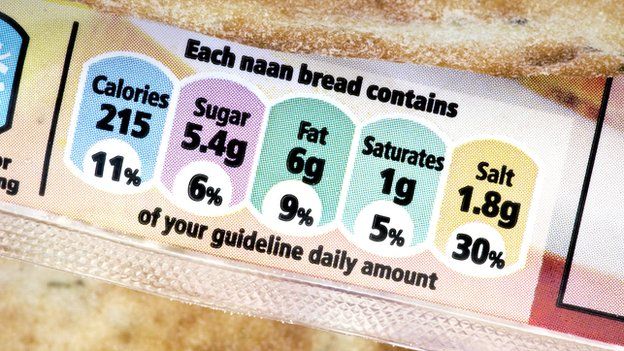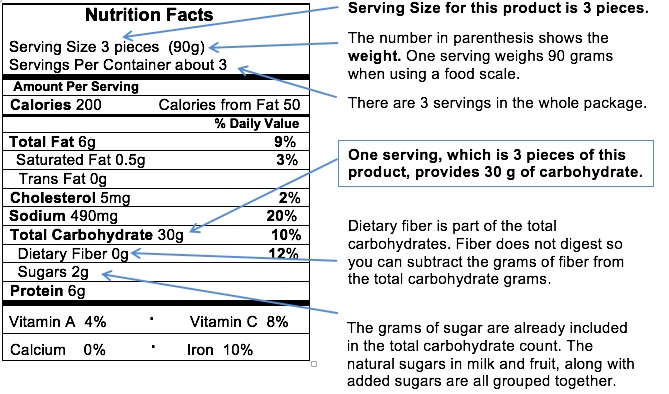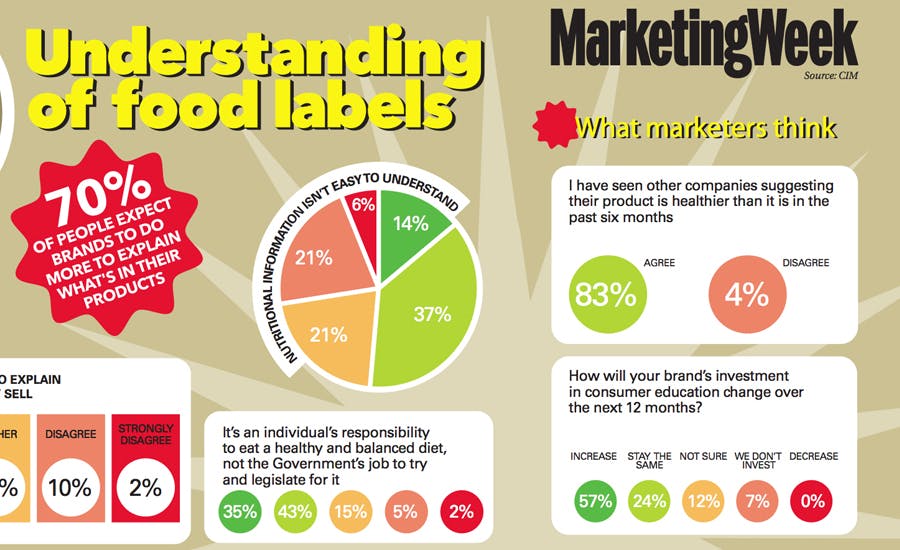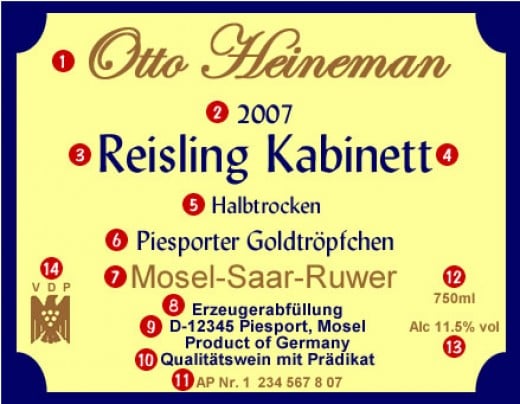42 understanding sugar content food labels
How to read nutrition labels | safefood Some labels use colour coding to show at a glance if a food is high, medium or low in fat, saturated fat, sugar and salt. Low (green) - the best choice. Medium (amber) - okay most of the time. High (red) - only choose occasionally. If the label isn't colour coded, use our label decoder as a guide. Understanding Food Nutrition Labels | American Heart Association Learn what to look for on the label. 1 - Start with the serving information at the top. This will tell you the size of a single serving and the total number of servings per container (package). 2 - Next, check total calories per serving and container.
Understanding food labels | Diabetes UK The labels show how many calories are in the food or drink and are also colour coded to show whether the food is low (green), medium (amber) or high (red) in fat, saturated fat, sugar and salt. The information on the front of the pack also tells you how the portion of the food contributes to the Reference Intake (RI) of an adult.

Understanding sugar content food labels
Understanding food labels fact sheet - NDSS Understanding how to read food labels can help you choose foods with more fibre and less saturated fat, salt (sodium), added sugars and kilojoules. Food labels will typically include a nutrition information panel, list of ingredients, the 'use by' or 'best before' date and identify potential food allergens and additives. Food labels ... Food labelling - Making Sense of Sugar - UK light colour overlaid on top of the nutritional information to indicate at a glance whether the food or drink contains a high (red), medium (amber) or low (green) amount of fat, saturates, sugars and salt. For traffic-light labels you will find different limits for total sugars depending on whether the product is a food How to Read Food Labels and Understand Sugar Content - yum. Gluten Free Agave, brown rice syrup, brown sugar, cane sugar, caster sugar, coconut nectar, coconut sugar, dextrose, fructose, fruit juice concentrate, glucose, glucose syrup, golden syrup, honey, icing sugar, invert sugar, maple syrup, molasses, panela, rapadura sugar, raw sugar, rice malt syrup, sucrose (They're all types of added sugar!) 'No added sugar'
Understanding sugar content food labels. How to Read a Food Label to Make Sure It's Keto in 3 Easy Steps 1. Look for a brand that indicates "No Sugar Added". Read the ingredient list to verify. Pederson's brand with the No Sugar-Whole30 Approved seal is my personal choice. 2. Go to the butcher. You can find him in the grocery store by the meat section or at your local butcher shop. Reading food labels: Tips if you have diabetes - Mayo Clinic A sugar-free label means that one serving has less than 0.5 grams of sugar. When you're choosing between standard products and their sugar-free counterparts, compare the food labels. If the sugar-free product has noticeably fewer carbohydrates, the sugar-free product might be the better choice. Added Sugars on the New Nutrition Facts Label | FDA Labels for foods and beverages with added sugars will list the number of grams and the percent Daily Value (%DV) for added sugars within the Nutrition Facts label. Having the word "includes" before... How to Understand and Use the Nutrition Facts Label | FDA Added Sugars on the Nutrition Facts label include sugars that are added during the processing of foods (such as sucrose or dextrose), foods packaged as sweeteners (such as table sugar), sugars from...
Food Labels | CDC All the numbers on this label are for a 2/3-cup serving. This package has 8 servings. If you eat the whole thing, you are eating 8 times the amount of calories, carbs, fat, etc., shown on the label. Total Carbohydrate shows you types of carbs in the food, including sugar and fiber. Choose foods with more fiber, vitamins, and minerals. Food Labels and Fighting Sugar Addiction - dummies The nutrition facts label is your key to uncovering the truth about the food and amount of sugar inside. The nutrition facts label shows you the serving size, the calorie count, the basic nutrition breakdown (protein, carbs, fat, sugar, sodium, and so on), and, most important, the ingredients. How to Read Carbohydrates on Food Labels - GlycoLeap That would be around 15 to 30 g of carbohydrates. Snack = 15 - 30 g of carbohydrate. For the main meals (breakfast, lunch, dinner), 2 to 3 servings of carbs would be enough. That is about 30-45 g of carbohydrates. 3 servings of carbohydrates are about the size of 1 fist size of rice. Food Labels: Carbohydrates | Home & Garden Information Center The Daily Value (DV) for total carbohydrate is 300 grams (g) or 100% DV, based on a 2,000-calorie diet. This number combines several types of carbohydrates: dietary fiber, sugars and complex carbohydrates. Listed below total carbohydrate on the food label are the values for dietary fiber and sugars.
Reading Food Labels | ADA - American Diabetes Association The Nutrition Facts labels on foods are really the key to making the best choices. We'll cover the basics so that these labels make shopping easier for you. Get started Understanding Carbs You've heard it all. From carb-free to low-carb, to whole and empty carbs, it's hard to know what it all means. Learn more Food & Blood Sugar Understanding Food Labels | The Nutrition Source | Harvard T.H. Chan ... Plain dairy milk will show 12 grams of Total Sugars (naturally occurring from lactose) per cup but zero Added Sugars. A cup of strawberry yogurt may show 20 grams of Total Sugars of which 10 grams are Added Sugars (10 grams are naturally occurring from lactose and the other 10 grams are from an added sweetener). Understanding food labels - Action on Sugar Checking food labels allows you to compare brands, varieties and flavours of products and choose those that are lower in sugars. Adding up the amount of sugars in the products you eat throughout the day will give you an idea of the amount of sugars you are eating. Foods low in sugars have less than 5.0g /100g Helping Kids Learn About Food Labels | Sanford Fit Nutrition labels give information. When you are choosing snacks and drinks, look at the sugar line. It will tell you about the natural and added sugars. "Added sugar" is any sugar that was added to the food at some point. Adding sugar to food does not make it more nutritious. Snacks and drinks without added sugars give you a bonus!

The Amount of Sugar Content in Common Foods - Chart | Food charts, Nutrition labels, Food packaging
Helping Kids Learn About Food Labels | Sanford Fit Nutrition labels give information. When you are choosing snacks and drinks, look at the sugar line. It will tell you about the natural and added sugars. "Added sugar" is any sugar that was added to the food at some point. Adding sugar to food does not make it more nutritious. Snacks and drinks without added sugars give you a bonus!
How to Read Food Labels Without Being Tricked - Healthline The product may contain very little whole grains. Check the ingredients list — if whole grains aren't in the first three ingredients, the amount is negligible. Fortified or enriched. This ...
Understanding sugar content on food labels - Diabetes Care Community Understanding sugar content on food labels is important, to ensure that you're consuming healthy amounts. Reading the ingredient lists and nutrition facts tables on packaged foods is a helpful way for you to check what kind, and how much, sugar a product has. Finding sugar content in the ingredients list
Food labels - NHS Nutrition labels are often displayed as a panel or grid on the back or side of packaging. This type of label includes information on energy (kJ/kcal), fat, saturates (saturated fat), carbohydrate, sugars, protein and salt. It may also provide additional information on certain nutrients, such as fibre.
What to Know About Sugars on the Nutrition Facts Label The new FDA Nutrition Facts label presents information about sugars in two ways that are different from the original label. First, the amount of sugar found in one serving of a product is now displayed as "Total Sugars." This information was previously displayed on the original label as "Sugars."
How To Read Food labels for Sugar | My Sugar Free Kitchen On the label check the sugars in the nutrition panel. 5g/ml or less of sugar per 100g/ml = this would count as low sugar content. It means 5% of the ingredients are sugar Between 5g/ml and 20g/ml of sugar per 100 grams = medium sugar content. With 20ml of sugar per 100 ml, this means the product is 20% sugar…not so good.
Nutrition Labeling - The Sugar Association the goal of the food and drug administration's (fda) nutrition fact label is to "ensure consumers have access to the information they need to make informed decisions about the foods they eat." 1 all nutrition facts labels are required to include an added sugars declaration beginning january 1, 2020 for manufacturers with >$10 million in sales and …
PDF Understanding nutrition labels and serving size 4 grams sugar = 1 teaspoon (tsp) sugar 12 grams sugar = 1 tablespoon (tbsp) sugar For example: a can of soda contains 140 calories and 38 grams of sugar. By dividing 38 grams by 4 grams sugar, we end up with 9.5 teaspoons. By dividing 38 grams by 12 grams sugar, we end up with 3.2 tablespoons of sugar. Therefore, our can of soda contains
Learning To Read Labels - Diabetes Education Online On a nutrition food label, subtract the fiber from the total carbohydrate amount. When you read food labels, the grams of sugar are already included in the total carbohydrate amount, so you do not need to count this sugar amount separately. The grams of sugar listed include both natural sugars, from fruit or milk, and added sugars.
How to Read Food Labels and Understand Sugar Content - yum. Gluten Free Agave, brown rice syrup, brown sugar, cane sugar, caster sugar, coconut nectar, coconut sugar, dextrose, fructose, fruit juice concentrate, glucose, glucose syrup, golden syrup, honey, icing sugar, invert sugar, maple syrup, molasses, panela, rapadura sugar, raw sugar, rice malt syrup, sucrose (They're all types of added sugar!) 'No added sugar'
Food labelling - Making Sense of Sugar - UK light colour overlaid on top of the nutritional information to indicate at a glance whether the food or drink contains a high (red), medium (amber) or low (green) amount of fat, saturates, sugars and salt. For traffic-light labels you will find different limits for total sugars depending on whether the product is a food
Understanding food labels fact sheet - NDSS Understanding how to read food labels can help you choose foods with more fibre and less saturated fat, salt (sodium), added sugars and kilojoules. Food labels will typically include a nutrition information panel, list of ingredients, the 'use by' or 'best before' date and identify potential food allergens and additives. Food labels ...













Post a Comment for "42 understanding sugar content food labels"